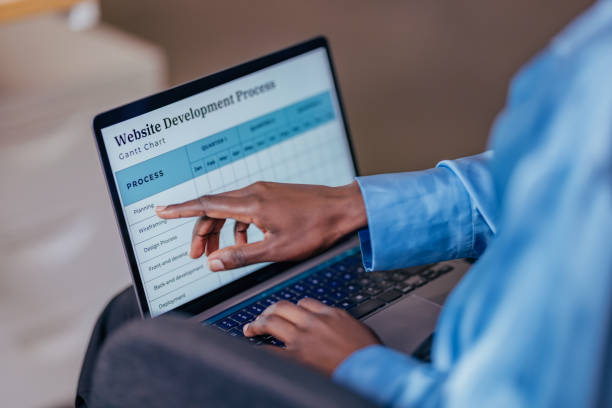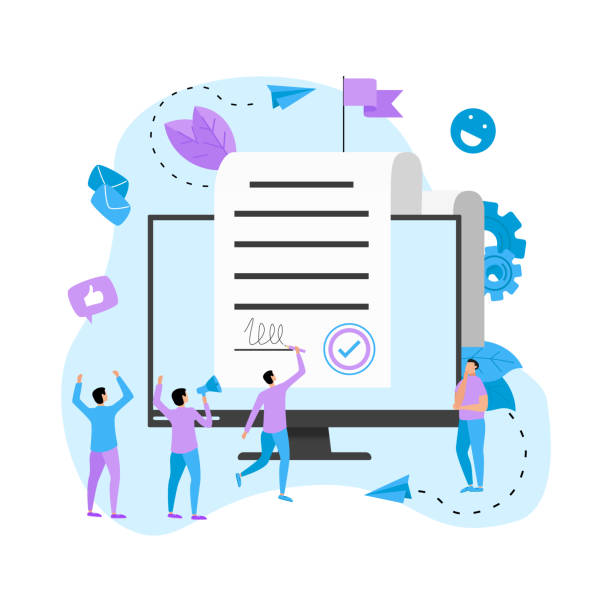Understanding the Importance of Multilingual Website Design in the Digital Age
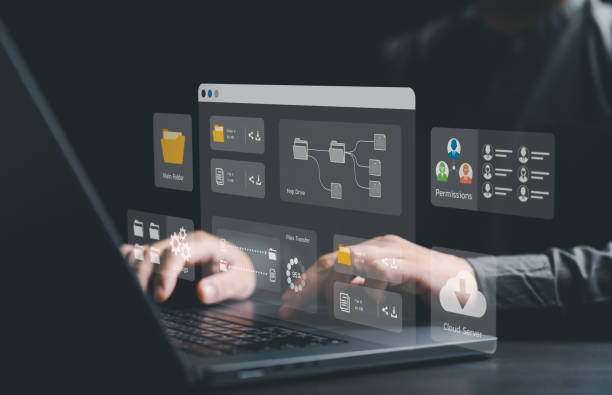
In today’s world, where geographical boundaries have less meaning in the virtual space, having a website solely in Persian may deprive your business of countless opportunities.
Multilingual website design is no longer a luxury option but a strategic necessity for any business that dreams of international expansion.
By entering global markets, you not only attract more potential customers but also enhance your brand’s international credibility.
This is especially crucial for companies offering digital products or services, or those planning to export goods.
Imagine your website being able to provide content in the native language of a visitor from Germany or China; this user experience will be far more pleasant and effective.
#Global_Market, #International_Customer_Acquisition, #Brand_Credibility_Increase are among the most important advantages of this approach.
Beyond that, creating a multilingual website demonstrates your respect for different cultures and languages, which can lead to long-term customer loyalty.
This is a big step towards business globalization and reaching audiences who were previously inaccessible due to language barriers.
The educational nature of this section helps you gain a deeper understanding of this necessity and the importance of investing in implementing multilingual websites.
Are you tired of missing business opportunities due to not having a professional corporate website?
Rasaweb, with its professional corporate website design, helps you:
✅ Build a powerful and reliable image for your brand
✅ Convert website visitors into loyal customers
⚡ Get a free consultation now!
SEO Benefits and Global Reach with a Multilingual Website
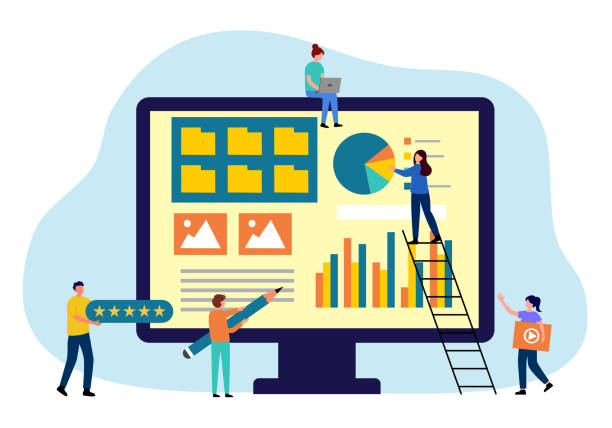
One of the most important reasons to invest in multilingual website design is the significant improvement in SEO (Search Engine Optimization) and increased global accessibility.
Search engines like Google effectively index multilingual content, allowing your website to appear in search results for various languages.
For instance, if a user in Germany is looking for a product or service you offer, and your website is available in German, the probability of it appearing in their search results significantly increases.
Using hreflang tags is a specialized and very important method for signaling to search engines about different language versions of a page.
These tags prevent content duplication and help search engines display the appropriate version of each page to users in different geographical regions.
This not only leads to an increase in organic traffic to your website but also improves traffic quality, as users access content that is more relevant and understandable to them.
From an analytical perspective, this approach allows you to collect data on visitors from different countries and adjust your marketing strategies accordingly.
This is a significant competitive advantage that enables you to outperform competitors who operate in only one language and capture a larger share of the global market.
Therefore, implementing a multilingual website is not only valuable for your users but also a powerful tool for search engine optimization and business growth.
Technical Considerations in Implementing Multilingual Websites

When designing a multilingual website, several technical aspects must be carefully considered to ensure the website functions correctly and provides an optimal user experience.
One of these considerations is the URL structure.
There are three main approaches to structuring URLs: using subdomains (e.g., en.yourdomain.com), subdirectories (e.g., yourdomain.com/en/), or country-specific top-level domains (ccTLDs) (e.g., yourdomain.de).
Each of these approaches has its own advantages and disadvantages in terms of SEO, management, and hosting.
The correct choice depends on your long-term goals and resources.
In addition to URL structure, the correct implementation of hreflang tags is crucial.
These tags tell search engines that different versions of a page exist for specific languages or regions, which helps prevent duplicate content issues.
This is a specialized matter that requires high precision.
Also, you must ensure the ability for users to select their language; this is typically done via a Language Switcher in the website’s header or footer.
This switcher should be clearly visible and usable.
Unicode support for correctly displaying characters of different languages, especially those that do not use the Latin alphabet (such as Persian, Arabic, Chinese), is also a fundamental technical consideration.
Failure to comply with these points can lead to content display issues, poor navigation, and ultimately a suboptimal user experience.
Finally, the discussion of hosting and CDN is also relevant.
Using Content Delivery Networks (CDNs) can improve website loading speed for users worldwide, which is very important for SEO and user experience.
| Method | Description | Advantages | Disadvantages |
|---|---|---|---|
| Subdomains | E.g., en.example.com |
Full SEO separation, better regional control | Requires separate SSL and CDN management, lower domain authority |
| Subdirectories | E.g., example.com/en/ |
Easier to manage, centralized SEO authority | May be less intuitive for some users |
| Country Code Top-Level Domains (ccTLDs) | E.g., example.de |
Strong geographical recognition, high local trust | Higher cost, more complex management, requires multiple domains |
| Cookies/Browser | Language detection from browser settings or cookies | Fully automatic for the user, seamless experience | Requires manual switcher if user prefers, SEO issues |
Content Management and Translation in Multilingual Website Design
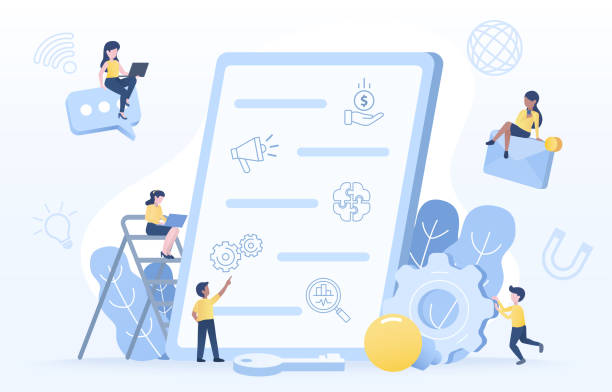
Content management and translation in multilingual website design is a significant yet crucial challenge.
The success of a multilingual website depends on the quality and accuracy of its translations.
Translation is not merely about words; it’s about conveying the concept, tone, and culture from the source to the target language.
There are various approaches to this task.
One method is machine translation, performed using tools like Google Translate.
This method is fast and inexpensive, but usually has low quality and is not recommended for sensitive or commercial content.
Another method is manual translation by native translators.
This method is more expensive and time-consuming but ensures the highest quality and accuracy, and culturally localizes the content.
You can also use a combination of these methods: machine translation for the initial draft, followed by editing by human translators.
For content management, using Content Management Systems (CMS) with multilingual capabilities, such as WordPress (with plugins like WPML), Drupal, or Joomla, is essential.
These systems provide tools for organizing and publishing content in various languages.
A comprehensive process for content updates across all languages must also be considered.
This includes updating articles, product pages, announcements, and other website information.
Inconsistent updates can lead to discrepancies and inaccurate information in different language versions, severely disrupting the user experience.
A questionable content point is whether a literal translation is always the best option, or if content should be localized for each market? The answer often leans towards full localization so that the content is not only linguistically correct but also culturally aligned with the target audience.
This section provides practical guidance for efficient content management in multilingual portals.
Did you know your company’s website is the first point of contact for 75% of potential customers?
Your website is the face of your brand. With **Rasaweb**’s corporate website design services, build an online presence that earns customer trust.
✅ Create a professional and lasting image for your brand
✅ Attract target customers and increase online credibility
⚡ Get a free consultation from **Rasaweb** experts!
Optimized User Experience (UX) for Multilingual Visitors
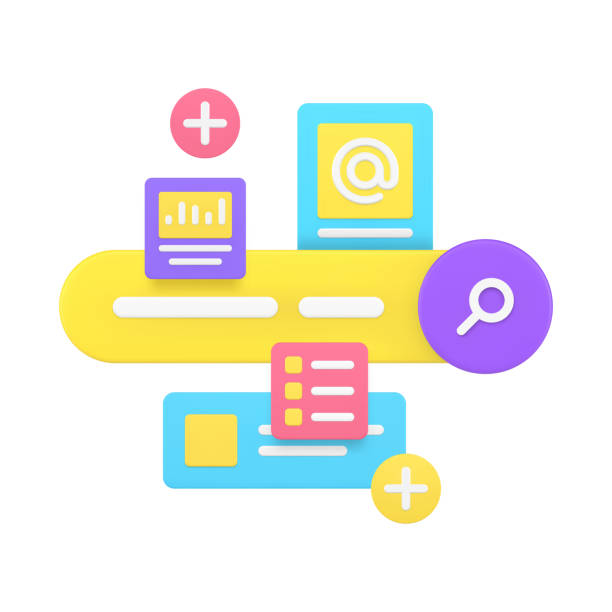
Multilingual website design is not limited to content translation; it requires special attention to User Experience (UX) for visitors from different cultures and languages.
An optimized UX means that users can easily find and select their desired language, and navigate in an environment that visually and functionally aligns with their cultural expectations.
User experience includes factors such as the placement of the language switcher (usually in the header or footer), the use of standard and understandable icons, and the ability to change language without reloading the entire page.
Furthermore, considering Text Direction for languages like Persian and Arabic, which are read from right-to-left (RTL), as opposed to Latin languages (LTR), is extremely important.
This change affects not only the text but also the overall page layout, image placement, and forms.
Ignoring these technical and visual details can lead to a frustrating user experience.
Additionally, from a specialized perspective, cultural differences in User Interface (UI) design must be considered; colors, images, and even layouts may have different meanings in various cultures.
An image that is perfectly normal in one culture might be considered offensive in another.
Therefore, the design process should include cultural research and testing with native users.
This analytical and guidance-providing approach helps you create a multilingual portal that is not only technically correct but also culturally connects with your target audience, leading to increased user engagement and satisfaction.
Common Challenges and Pitfalls in Multilingual Website Design
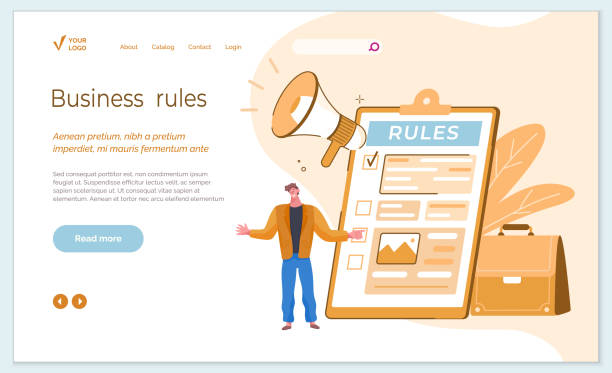
Multilingual website design, while offering numerous benefits, also comes with several challenges and pitfalls that, if ignored, can lead to project failure.
One of the most common mistakes is literal and unlocalized translation of content.
A poor translation not only causes misunderstanding but can also damage your brand’s credibility.
This raises a questionable content point: can machine translation tools be fully trusted? The answer is emphatically no.
For sensitive and critical content, review and localization by expert native translators are always necessary.
Another challenge is managing the technical complexities of SEO.
Incorrect implementation of hreflang tags, improper URL structure, or issues with automatic user language detection can lead to serious problems in search engine rankings.
Also, maintaining content consistency and integrity across all languages is difficult.
As more languages are added, managing updates and ensuring all information is accurate and up-to-date in all versions becomes more complex.
This is especially important for news or e-commerce websites where content changes constantly.
Other pitfalls include neglecting website loading speed for users in remote areas, which can lead to a poor user experience.
These issues require careful planning, the use of appropriate tools, and a specialized team for multilingual site design and implementation to prevent these problems and ensure your investment pays off.
Choosing the Best Content Management System (CMS) for Multilingual Websites
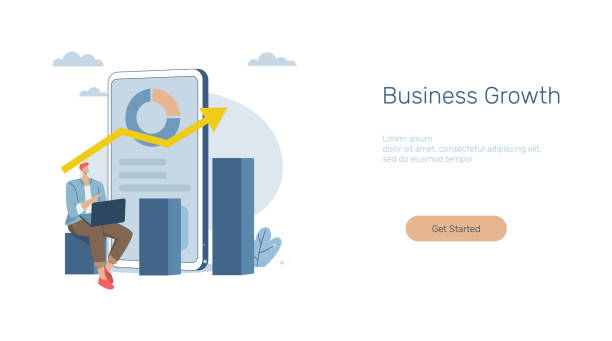
Choosing the right Content Management System (CMS) is one of the most important decisions in the multilingual website design process.
Your chosen CMS should support multilingual capabilities either natively or through plugins and modules.
This choice directly impacts implementation complexity, maintenance costs, and the ease of future content management.
Some of the most popular CMSs suitable for multilingual websites include:
- WordPress: By using plugins such as WPML or Polylang, WordPress can be transformed into a powerful multilingual platform.
This option is very popular for small to medium-sized businesses and blogs, as it is easy to use and has a large support community. - Drupal: Drupal inherently offers stronger multilingual capabilities compared to WordPress and is an excellent choice for large and complex projects with high customization needs.
This is a more specialized platform and requires more technical knowledge. - Joomla: Like Drupal, Joomla natively supports multilingual features and offers a balance between Drupal’s complexity and WordPress’s simplicity.
- Adobe Experience Manager (AEM): For large and enterprise-level companies requiring comprehensive content marketing and customer experience management solutions, AEM is a powerful option that provides advanced multilingual capabilities.
- Custom CMSs: In some cases, for projects with very specific needs, developing a custom CMS might be necessary.
This solution offers high flexibility but is the most expensive and time-consuming option.
Each of these CMSs has its own features and limitations.
Your choice should be based on your budget, team size, technical needs, and long-term strategy for multilingual website development.
It is recommended to conduct thorough research and even experiment with a few options before making a final decision.
This section provides specialized guidance for deciding on the right platform for your multilingual website design project.
| CMS | Native Multilingual Capability | Requires Plugin/Module | Implementation Complexity | Suitable For |
|---|---|---|---|---|
| WordPress | No | Yes (WPML, Polylang) | Medium | Blogs, SMEs, informational websites |
| Drupal | Yes | No (Limited) | High | Enterprise projects, complex websites |
| Joomla | Yes | No (Limited) | Medium to High | Medium projects, online communities |
| Adobe Experience Manager (AEM) | Yes | No | Very High | Large corporations, comprehensive marketing solutions |
Testing and Quality Assurance in Multilingual Websites

After the completion of the multilingual website design process and content entry, the testing and Quality Assurance (QA) phase is critically important.
This phase ensures that the website not only functions correctly technically but also provides a seamless and proper user experience across all languages and for all target audiences.
Multilingual testing should include a thorough review of all website elements.
The first step is a thorough review of translations.
This should be done by native translators or individuals fluent in the target languages to ensure the grammatical, spelling, and cultural accuracy of the translations.
Check whether the original tone and message of the content are preserved in the translation. Are local idioms and phrases used correctly? This is a specialized and time-consuming process.
Next, Functional Testing for each language version is essential.
This includes checking links, forms, search, buttons, and other interactive elements of the website to ensure they work correctly in all languages.
Also, Responsive Testing across different devices and screen sizes for each language is important, as text direction and word length can affect page layout.
Finally, multilingual SEO testing involves checking hreflang tags, URL structure, and meta tags to ensure proper optimization for search engines in each language.
This educational and guidance-providing step helps you deliver a high-quality multilingual website to your global audience.
Did you know your company’s website is the first point of contact for 75% of potential customers?
Your website is the face of your brand. With **Rasaweb**’s corporate website design services, build an online presence that earns customer trust.
✅ Create a professional and lasting image for your brand
✅ Attract target customers and increase online credibility
⚡ Get a free consultation from **Rasaweb** experts!
Legal and Cultural Considerations for Multilingual Websites

Beyond translation and technical issues, multilingual website design requires a deep understanding of the legal and cultural considerations of target markets.
Ignoring these aspects can lead to legal problems, cultural misunderstandings, and damage to brand reputation.
From a legal perspective, each country has its own laws regarding data privacy (e.g., GDPR in Europe), copyright, and e-commerce regulations.
Ensuring your website complies with these laws in all regions of its operation is vital.
This includes correctly displaying legal notices, terms and conditions, and privacy policies in local languages.
From a cultural perspective, attention must be paid to elements such as colors, images, symbols, and even numbers, which may have different meanings across various cultures.
For example, a color that symbolizes good luck in one culture might have a negative connotation in another.
Using localized visual content can establish a deeper connection with the audience.
Furthermore, communication style (formal or informal), sense of humor, and even the format for displaying dates and times should align with local culture.
This is a specialized and explanatory discussion that helps you avoid mistakes.
A successful multilingual website, beyond mere translation, must align with the local culture and values of its audience to foster trust and familiarity.
Competitor Analysis and New Opportunities in the Global Market with a Multilingual Website
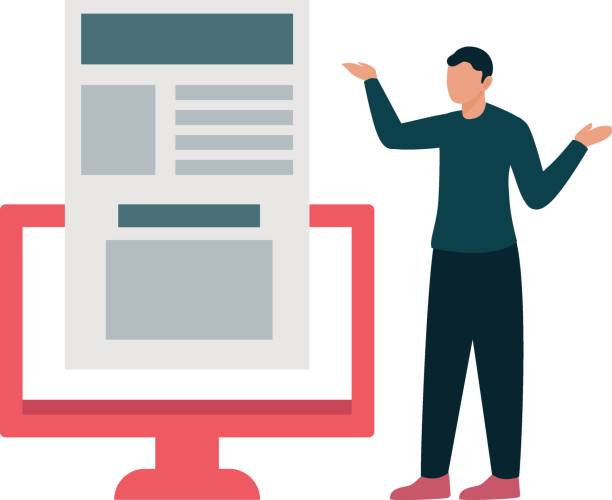
One of the key aspects of a multilingual website design strategy is conducting a comprehensive competitive analysis.
By examining the multilingual websites of your competitors in target markets, you can identify their strengths and weaknesses and learn from them.
This analysis includes reviewing the languages they support, the quality of their translations, their URL structure, and even the user experience they provide.
This is an analytical approach that helps you formulate an effective strategy for your international presence.
In addition to competitor analysis, identifying new opportunities in global markets is also important.
There may be markets that your competitors have not yet entered or where they offer weak services.
By designing a targeted multilingual website for these markets, you can quickly gain a significant market share.
For instance, examining Google search trends in different countries for products or services similar to yours can provide valuable insights.
Using tools like Google Trends or Google Keyword Planner can help you identify demand and search volume in various languages.
This section can also include case studies of successful companies that have achieved significant growth by implementing a multilingual website.
This is news- and explanatory content that demonstrates how, with the right insight, untapped opportunities can be discovered, and competitors can be surpassed with a multilingual site.
Frequently Asked Questions
| Number | Question | Answer |
|---|---|---|
| 1 | What is multilingual website design? | Multilingual website design means creating a website whose content is available to users in several different languages. This is usually done through a simple user interface for language switching. |
| 2 | Why should we design a multilingual website? | Designing a multilingual website helps you reach a wider audience globally, provide a better user experience for international users, and improve your global SEO. |
| 3 | What are the main methods for implementing multilingualism on a website? | The main methods include using subdomains, subdirectories, or URL parameters for each language, as well as using completely separate domains for each language. |
| 4 | Is it better for SEO to use subdirectories or subdomains? | From an SEO perspective, both subdirectories and subdomains can be effective. However, many SEO specialists prefer subdirectories due to better passing of primary domain authority. |
| 5 | What are the important points in translating multilingual website content? | Translation should be done by native translators, content should not only be translated but also localized to align with the target audience’s culture, and pure machine translation should be avoided. |
| 6 | What is the role of the hreflang tag in multilingual site SEO? | The hreflang tag helps search engines like Google display the correct language and regional version of a page to the appropriate users, which also prevents duplicate content issues. |
| 7 | Can a website be made multilingual without coding? | Yes, in Content Management Systems (CMS) like WordPress, there are powerful plugins such as WPML or Polylang that enable multilingual website creation without the need for coding. |
| 8 | What are the challenges of multilingual website design? | Challenges include translation management, content localization, adherence to SEO principles for each language, technical support for different languages, and ensuring design consistency across different languages. |
| 9 | What is the difference between translation and localization? | Translation is merely rendering words from one language to another, while localization involves adapting content to the culture, customs, currency, date and time formats, and even appropriate colors for the target audience. |
| 10 | What is the best user experience (UX) for language switching? | A clear and accessible language switcher (usually in the header or footer), using language names instead of flags (due to regional variations), and preserving the user’s position after changing language are important UX considerations. |
And other services of Rasa Web Advertising Agency in the field of advertising
Smart Link Building: An innovative service for increasing campaign management through marketing automation.
Smart UI/UX: A combination of creativity and technology for digital branding using real data.
Smart SEO: A professional solution for increasing sales with a focus on precise audience targeting.
Smart Sales Automation: Revolutionize digital branding with the help of attractive user interface design.
Smart Brand Identity: A professional solution for digital branding with a focus on attractive user interface design.
And over hundreds of other services in the field of internet advertising, advertising consulting, and organizational solutions
Internet Advertising | Advertising Strategy | Advertorial
Multilingual Website Design and International SEOImportance of Multilingual Websites in Global MarketsComprehensive Guide to Building a Multilingual SiteIncrease Sales with a Multilingual Site
? Are you looking for a big leap in the online world? Rasaweb Afarin creates a powerful and effective online presence for your business by offering innovative digital marketing solutions, including fast website design.
📍 Tehran, Mirdamad Street, next to Bank Markazi, Southern Kazeroon Alley, Ramin Alley No. 6

